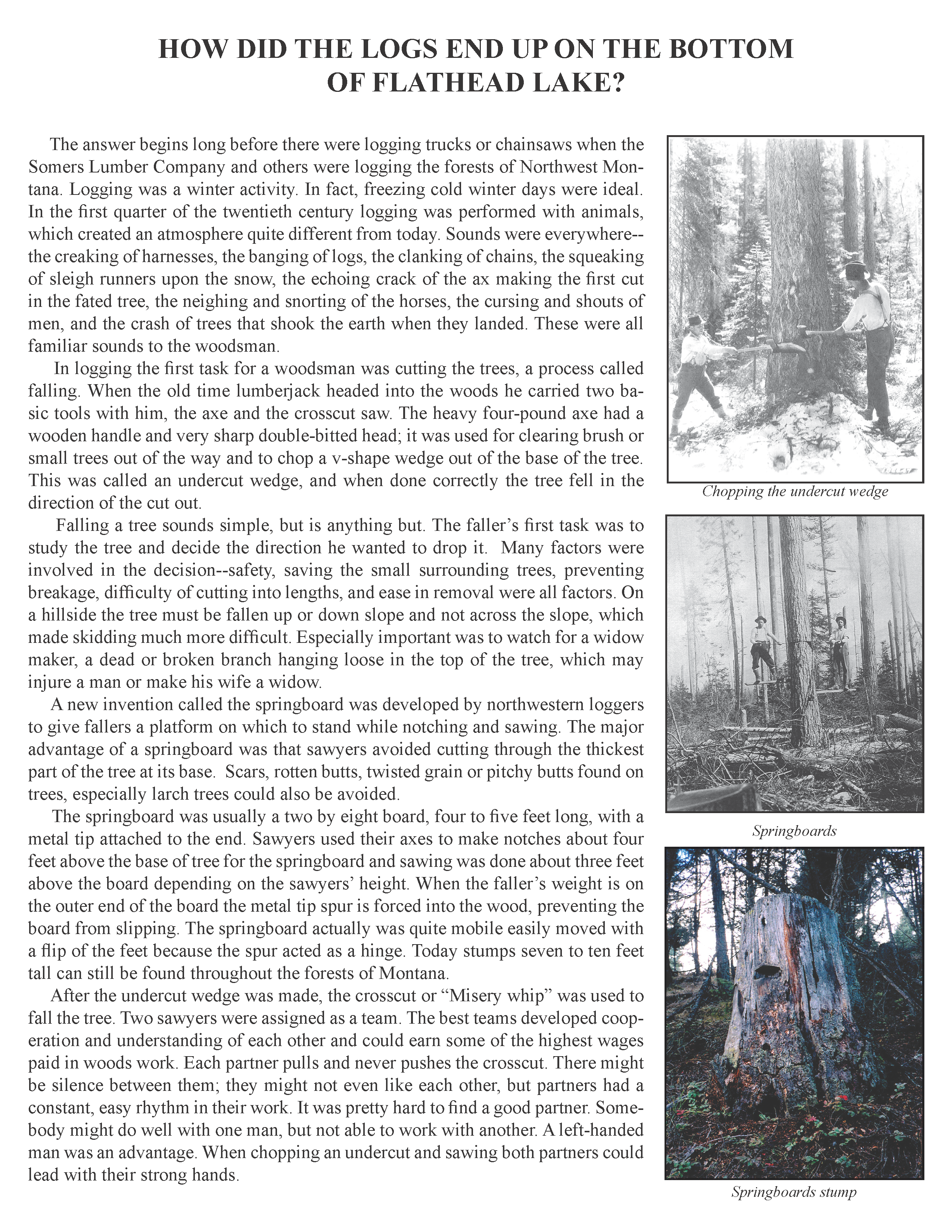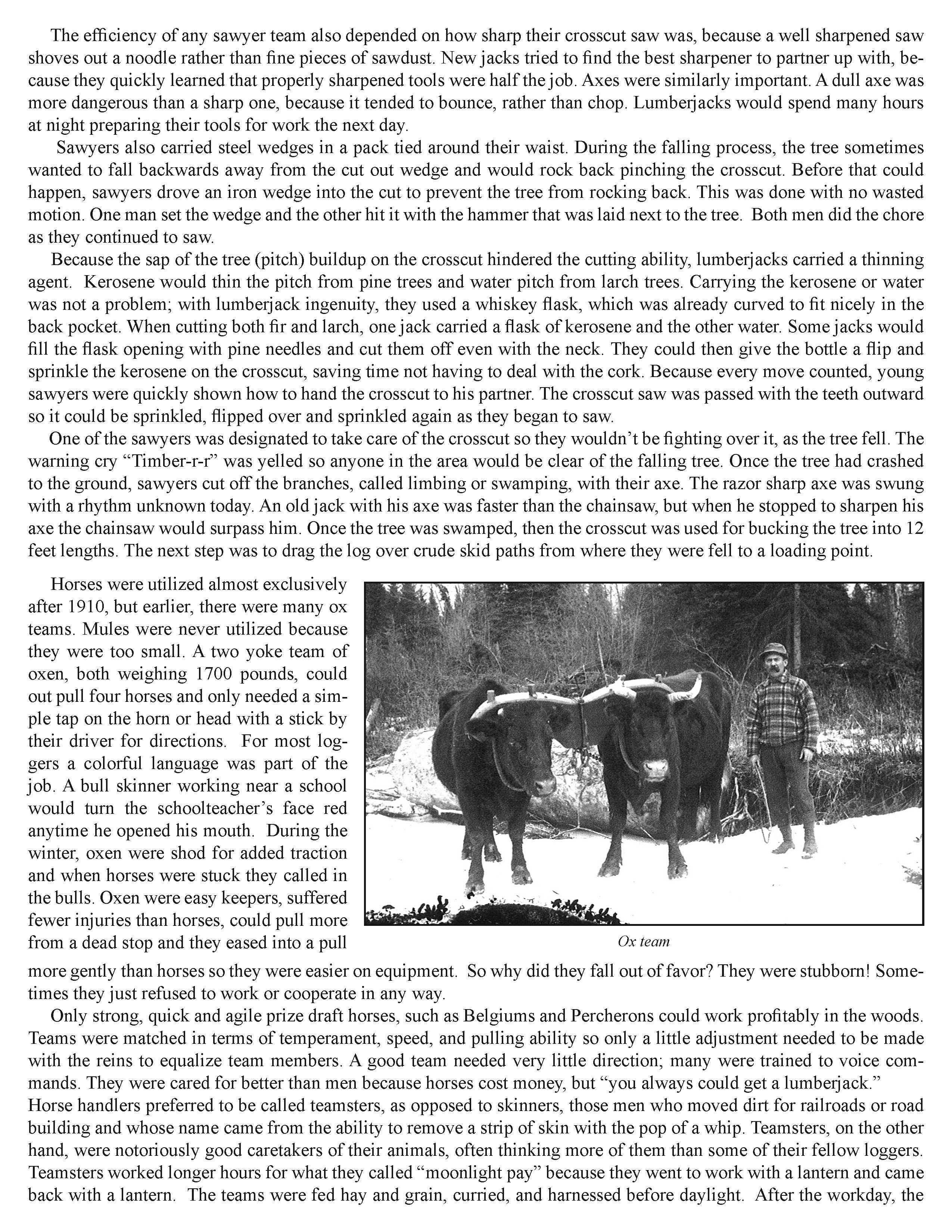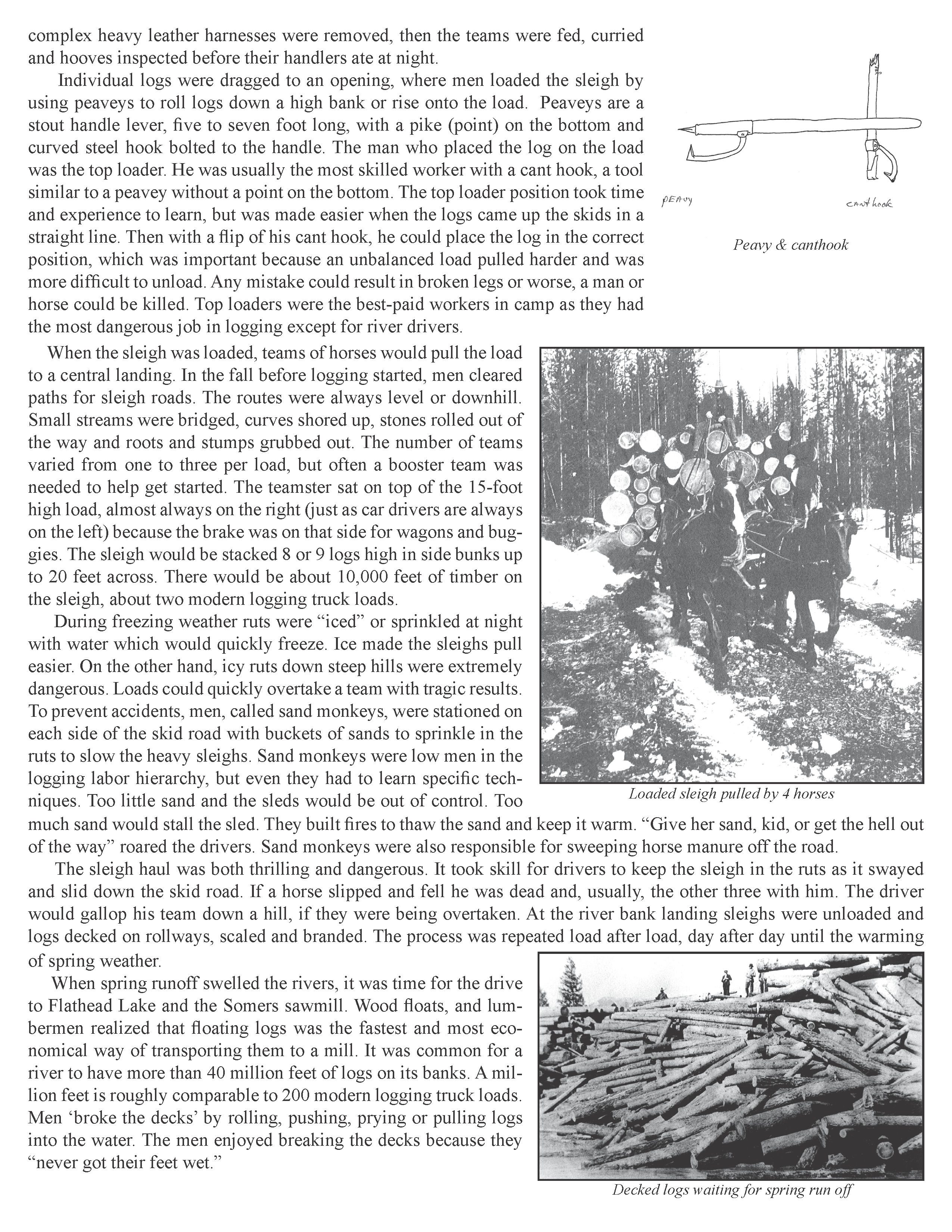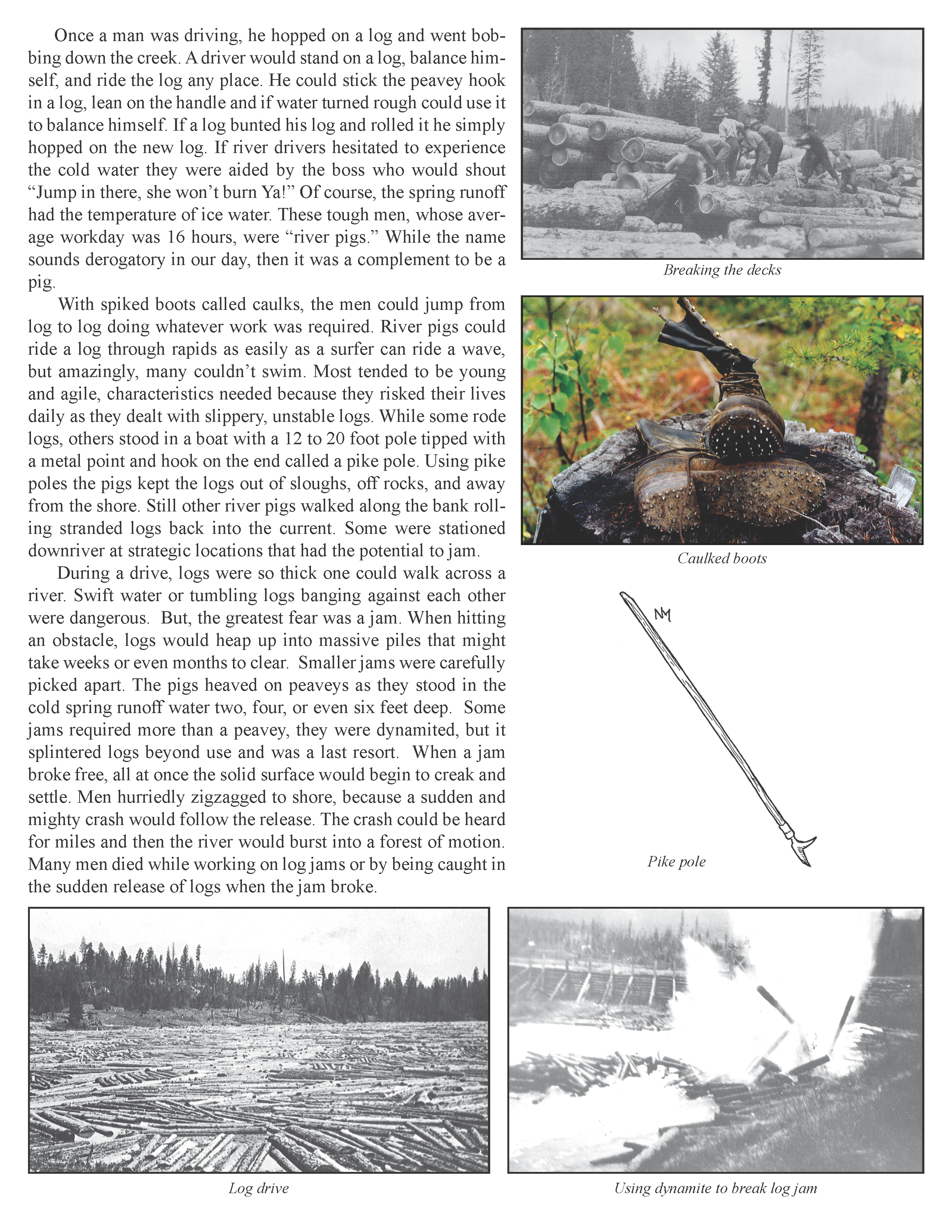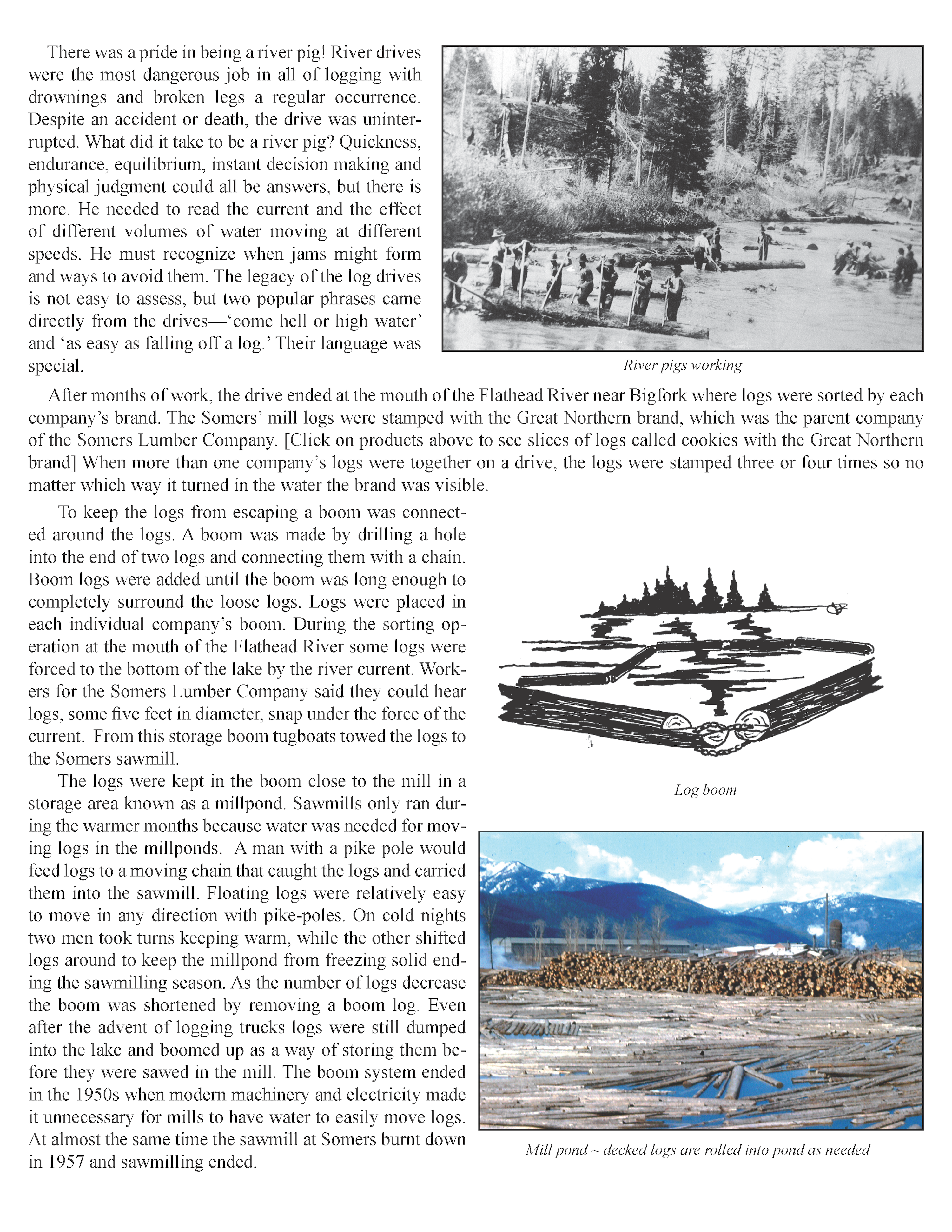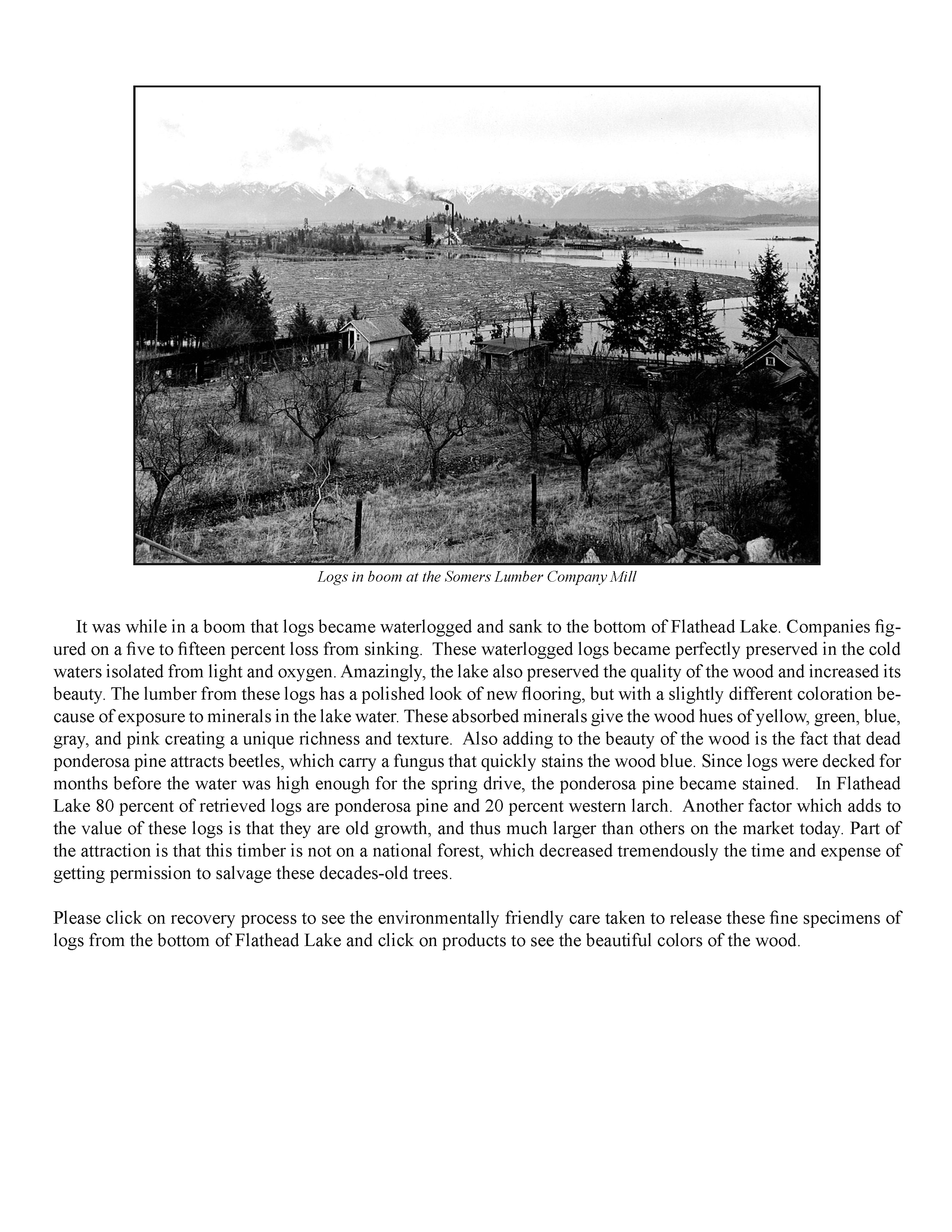A COLORFUL HISTORY – 300-YEAR-OLD TIMBER RECLAIMED FROM FLATHEAD LAKE
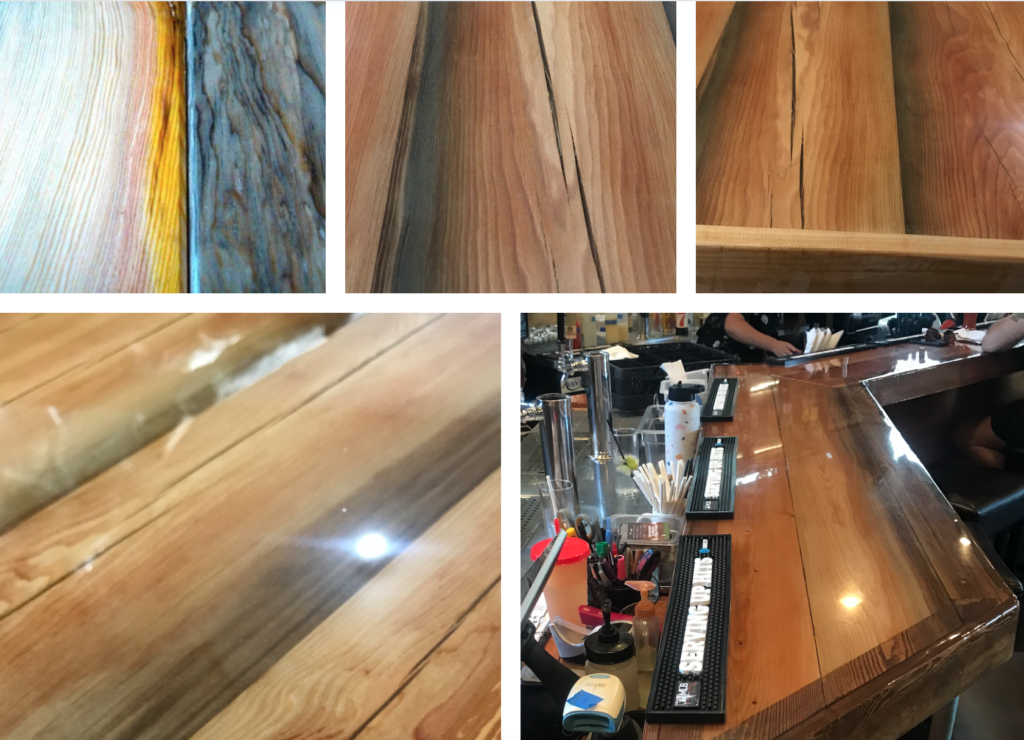
By Emily Stifler, Big Sky Weekly
In the early 1900s, the forests around Flathead Lake were primarily western larch, ponderosa pine and Douglas fir. Sawyers cut these trees with crosscut saws and stamped each log with distinctive brands, which were used to identify ownership and for the sawyers to tally and be paid for the trees they cut. The Somers Lumber Company brand was the Circle N, in part because the Great Northern Railway financed the sawmill.
Since there were only a few primitive roads, the logs were floated down the Flathead and Swan rivers during spring log drives, corralled on the lake, and then floated to the northwest shore. There, in Somers Bay, George Devoe and his family operated the Somers Lumber Company from 1901-1948.
From 1901-1906, the sawmill produced nearly 600,000 railroad ties annually for the Great Northern Railway, using mostly Douglas fir. By 1910, the mill produced over 30 million board feet of lumber each year.
Because the mill made so many railroad ties, they often left logs floating in the bays before pulling them out to process. Working as Somers’s bookkeeper, George DeVoe’s wife Donetta noticed the company paid the sawyers for more logs than ever showed up at the mill – a percentage of the logs had sunk to the bottom of the lake, where they’ve remained for the last century.
A fire destroyed the mill and over a million board feet of lumber in 1957. Although the mill was never rebuilt, and the DeVoes often talked about the submerged logs and the money it could provide their children and grandchildren. When George passed away, Donetta moved to Hailey, Idaho and opened a women’s clothing store.
In 2004, Donetta contacted Alan Leener, a friend of her husband whom she’d first met in 1968 as a traveling salesman selling women’s clothing. Donetta called Leener, requesting his help forming a company to recover the sunken logs.
“I’m in the garment business and I know nothing about the wood business. Donetta quickly responded emphatically “Well honey, you better start learning about wood and damn quick”, and slammed down the phone.
That was the inception of North Shore Development LLC (North Shore), who quickly hired Northwest Management Inc. a natural resource consulting company to oversee and implement the project. Northwest Management Inc. (NMI) is a natural resource planning and project implementation company with over 25 years of experience assisting their clients with forestry and natural resource management issuses. NMI has offices in Moscow Idaho, Deer Park Washington and Helena Montana and a seasonal office in Big Sky.
Jim Cancroft, a forester with Northwest Management, has spent the last three years figuring out how to pull these logs off the bottom of the lake in an environmentally sensitive manner. Mr. Cancroft also helped write the Big Sky Forest Stewardship Plan and has implemented numerous forest health improvement projects in the Big Sky area.
In September 2005 North Shore applied for and received a permit from the Montana DEQ in connection with the proposed salvage operations . However, in the spring of 2006 the Montana DNRC ordered North Shore to cease and desist any salvage operations and then commenced a legal action to determine ownership of the sunken logs. After extensive discovery in the litigation, the parties reached a settlement under which (1) the State acknowledged that North Shore as the owner of any submerged logs with a circled “N” end stamp found in or upon the State-owned bed of Flathead Lake; (2) North Shore acknowledged that the State is the owner of all other submerged logs found in or upon the State-owned bed of Flathead Lake; and (3) all activities are subject to the Montana Environmental Policy Act (MEPA) and any such required regulatory permits. Under this guidance, the Land Board agreed to issue to North Shore a land use license under which North Shore could conduct log salvage operations on Flathead Lake.
The writing of the Environmental Assessment (EA) was lead by Mr. Cancroft who was one member of the interdisciplinary team formed to help write the EA. After public meetings and a written public comment period, the final environmental assessment was submitted and then unanimously approved at the September 2010 Land Board Meeting.
In the past year, divers have salvaged nearly 1,000 submerged logs, Cancroft says. Local divers were hired to locate the logs and attach airbags or eyebolts to them. Each log is winched one at a time and attached to the underside of a pontoon boat for transport to a boat ramp where they are secured to a modified boat trailer and driven to a staging area. All logs are identified by a unique number attached to the log and each log is scaled by NMI or Montana DNRC foresters to determine their gross board feet. “These logs weigh a lot!” say Cancroft, “They are full of water and it takes a number of weeks for the water to seep out”. After the logs are scaled they are then loaded onto local log trucks and transported to a speciality mill in Bonners Ferry, Idaho or Hunts Timbers in St. Ignatius, Montana.
NMI has contracted with these mills to produce an array of specialty forest products like tongue and groove flooring, paneling and rough cut lumber used for bar tops, mantles and doors.
“A lot of the wood has reacted to being in the water”, says NMI project manager Loren Pinksi who is helping develop a distribution chain for the lumber, “The larch has turned chocolate brown, with streaks of black, green and violet, while the pine has been stained peach, black, gray, charcoal and blue”.
“Word about the project is getting around” Pinski says, “They’ve already sold rough-cut lumber, fireplace mantles and doors around Montana. A new brewery in Missoula bought a big slab of larch for its bar top; a local musician bought a piece to build a bass guitar for his son”.
NMI foresters who admittedly love wood, say that while salvaging wood from lake bottoms is not necessarily unique– it has happened in the Great Lakes – it’s the unique history of the wood, the environmentally sensitive manner in which logs are salvaged from the bottom of Flathead Lake and most importantly the beautiful variety of colors of the milled lumber, that makes this Montana forest product so unique and special.
A shipment of flooring, paneling and rough cut lumber has recently been sent from Hunts Timbers to Montana Reclaimed Lumber (MRL) in Gallatin Gateway. Ironically, a MRL employee is a cousin of the DeVoe family the original owners of the Somers Bay Lumber Company.
